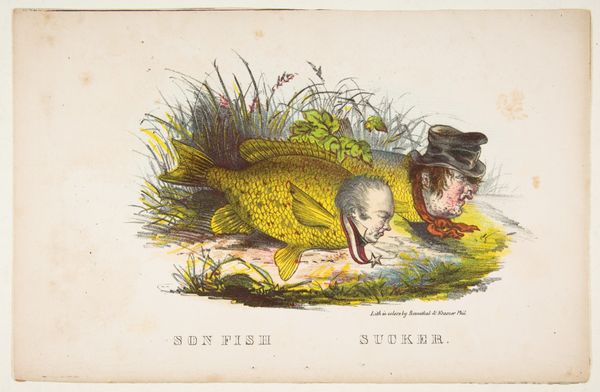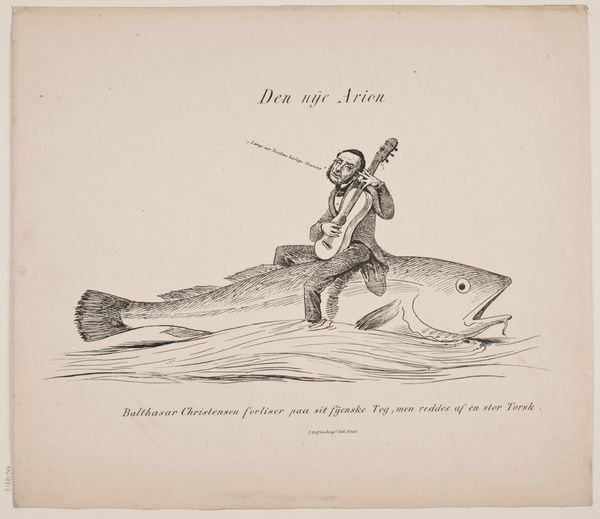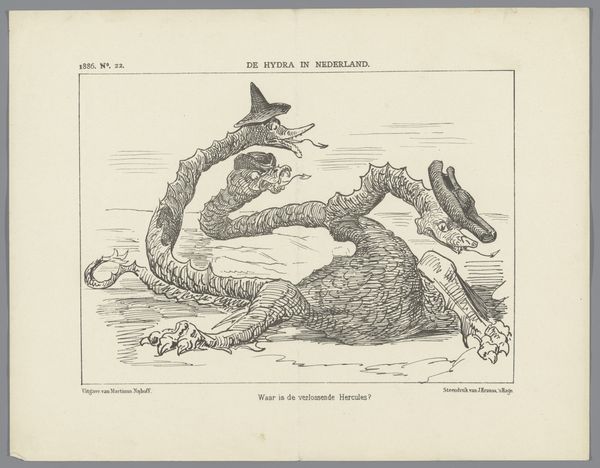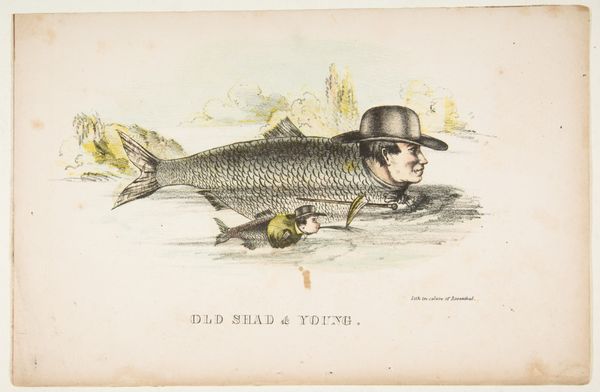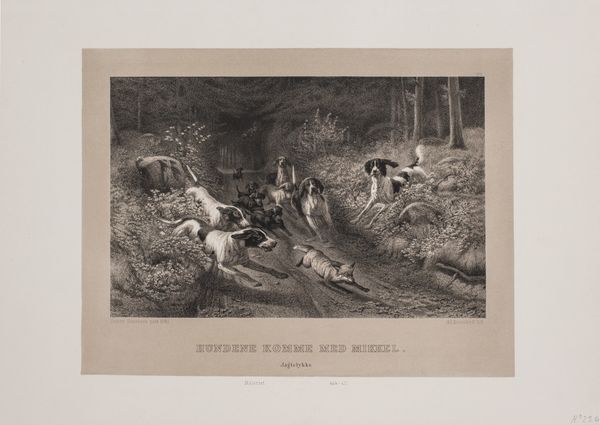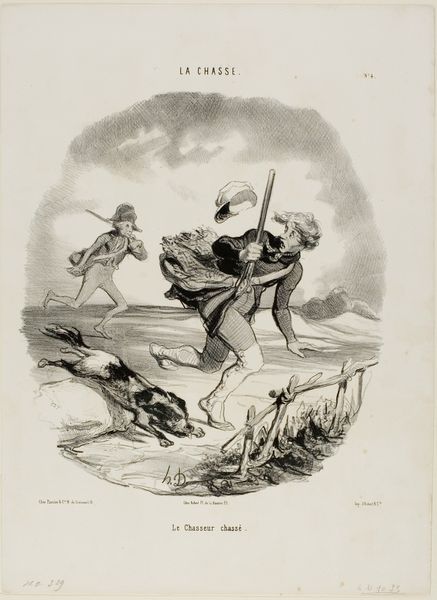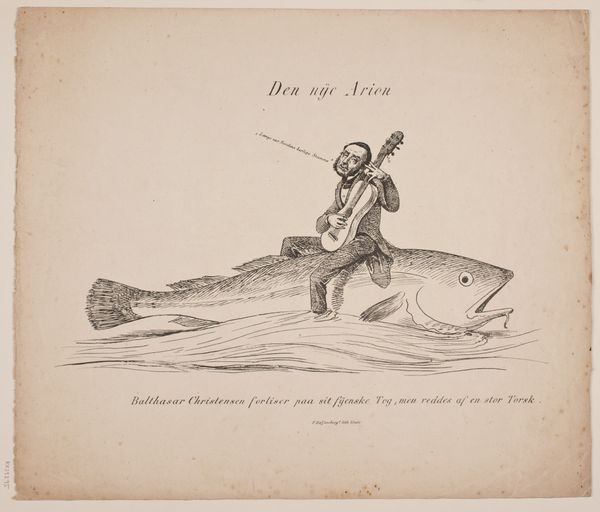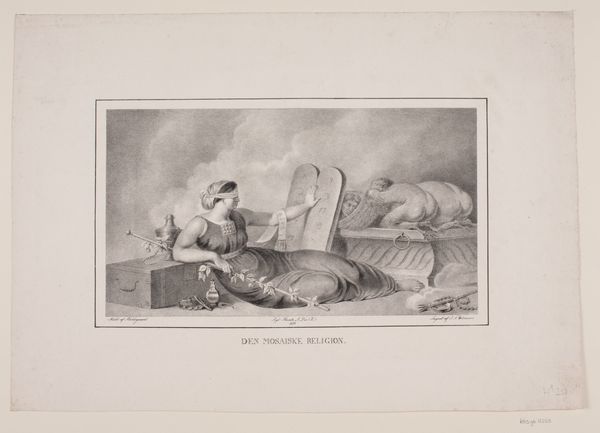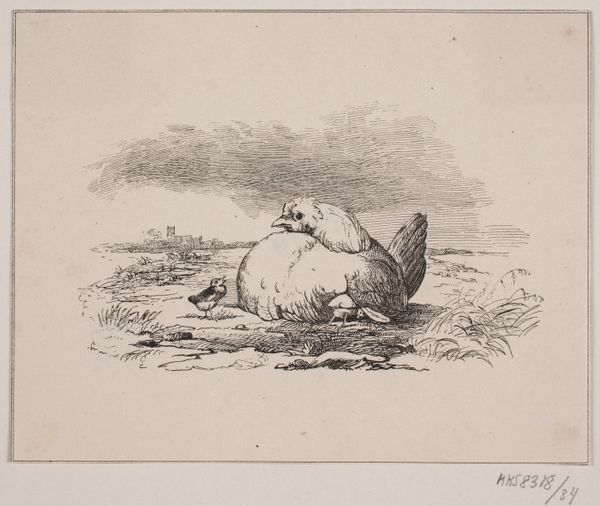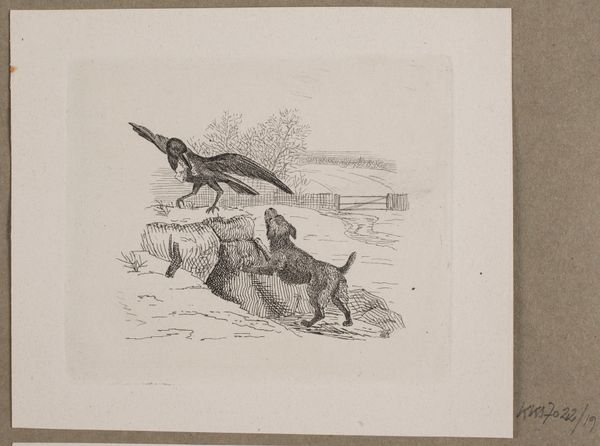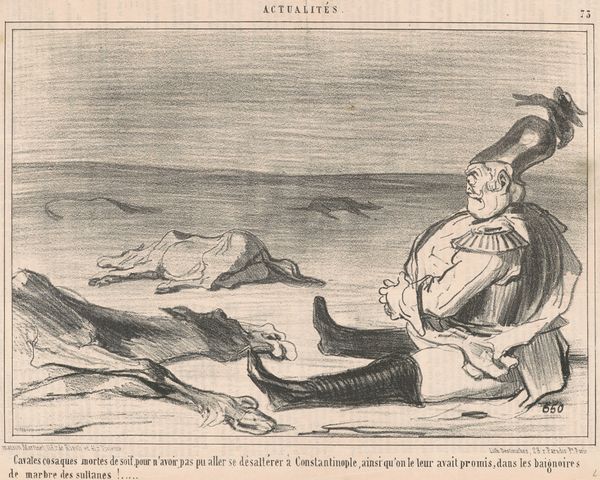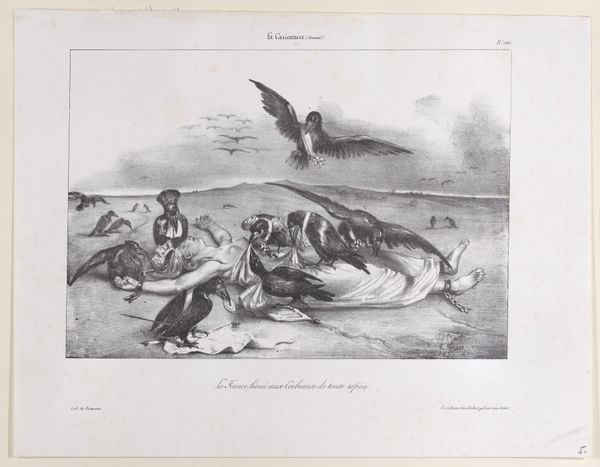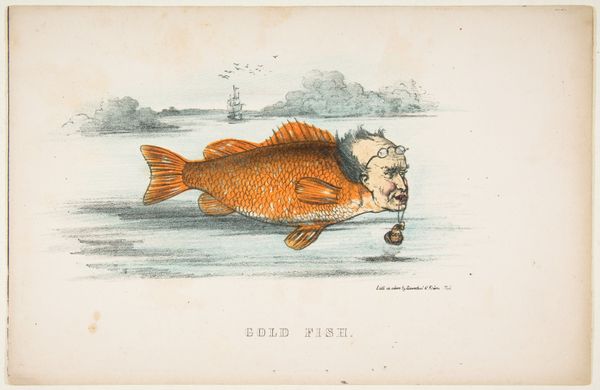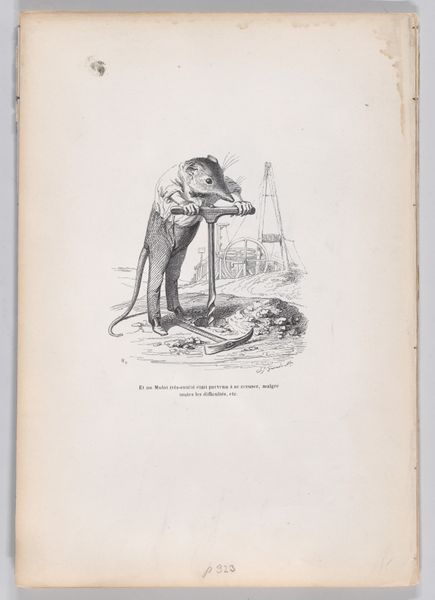
Gudgeon and Shark, from The Comic Natural History of the Human Race 1851
0:00
0:00
Dimensions: sheet: 7 x 10 7/8 in. (17.8 x 27.7 cm)
Copyright: Public Domain
Editor: So, we’re looking at Henry Louis Stephens’ "Gudgeon and Shark," a print from 1851. It’s quite striking; the anthropomorphic fish give it an almost satirical edge. What do you see in this piece from your perspective? Curator: Well, I see a pointed commentary on social hierarchy and exploitation, typical of mid-19th-century caricatures. Notice how the 'shark' sports the head of what appears to be a member of the upper class. What social messages do you think Stephens is trying to get across? Editor: I hadn’t really considered that, I just saw the funny aspect of human heads on fish! But, if the shark represents the upper class, then the gudgeon, dressed so formally, maybe is trying to mock a stuffy middle class? Curator: Precisely! Stephens is playing with recognizable visual tropes. Consider the title, linking a 'gudgeon,' known for being easily tricked, to the ‘shark’ - a predator. It's more than just funny; it critiques the relationship between the powerful and the vulnerable. Are there other visual clues you see? Editor: The color, perhaps? The shark seems drab, while the gudgeon is colorful and detailed... but also clearly about to be eaten! Is Stephens maybe also implying something about appearances being deceptive, and who has the power to consume and dominate? Curator: Absolutely, and the Romanticism tag in the metadata can be explored here. This movement valued emotional expression and a connection to nature. Here it contrasts, though. Does this contrast highlight something more sinister about human nature, exploiting the vulnerable even within a picturesque setting? Editor: That's fascinating! I came in thinking it was just a funny picture of fish, but I now see how the artwork makes us examine social inequality! Curator: Indeed! Stephens is making sure his audience, through laughter, might reconsider some harsh truths about the society around them, and perhaps reflect on the role of popular imagery in shaping such perceptions.
Comments
No comments
Be the first to comment and join the conversation on the ultimate creative platform.
